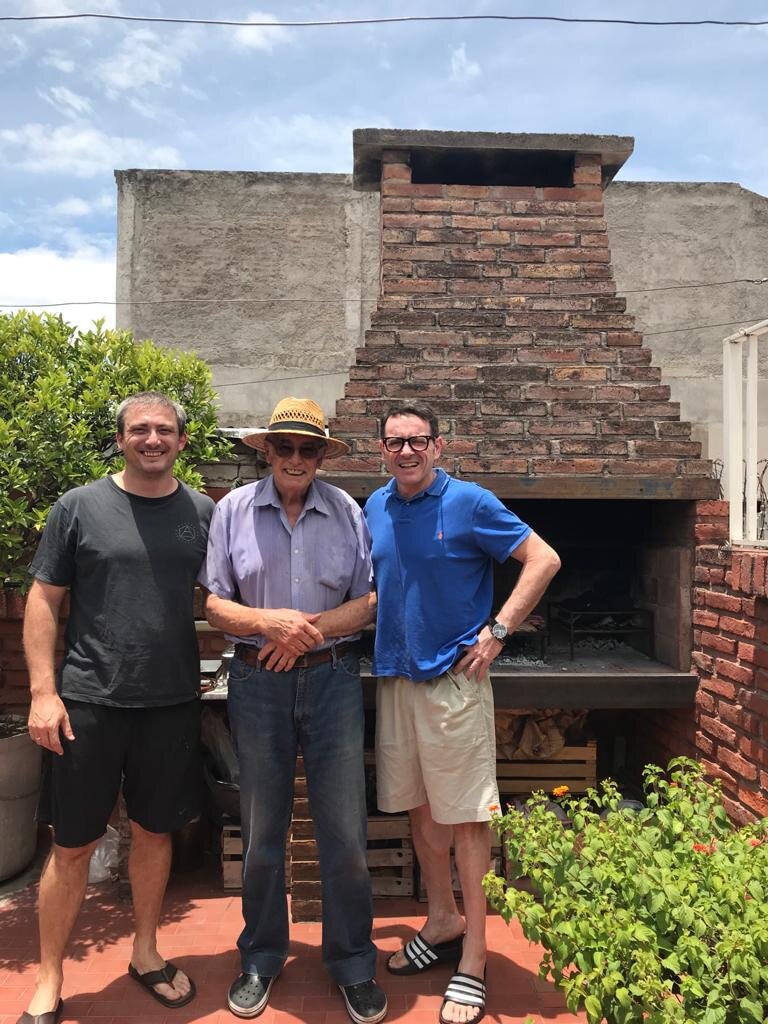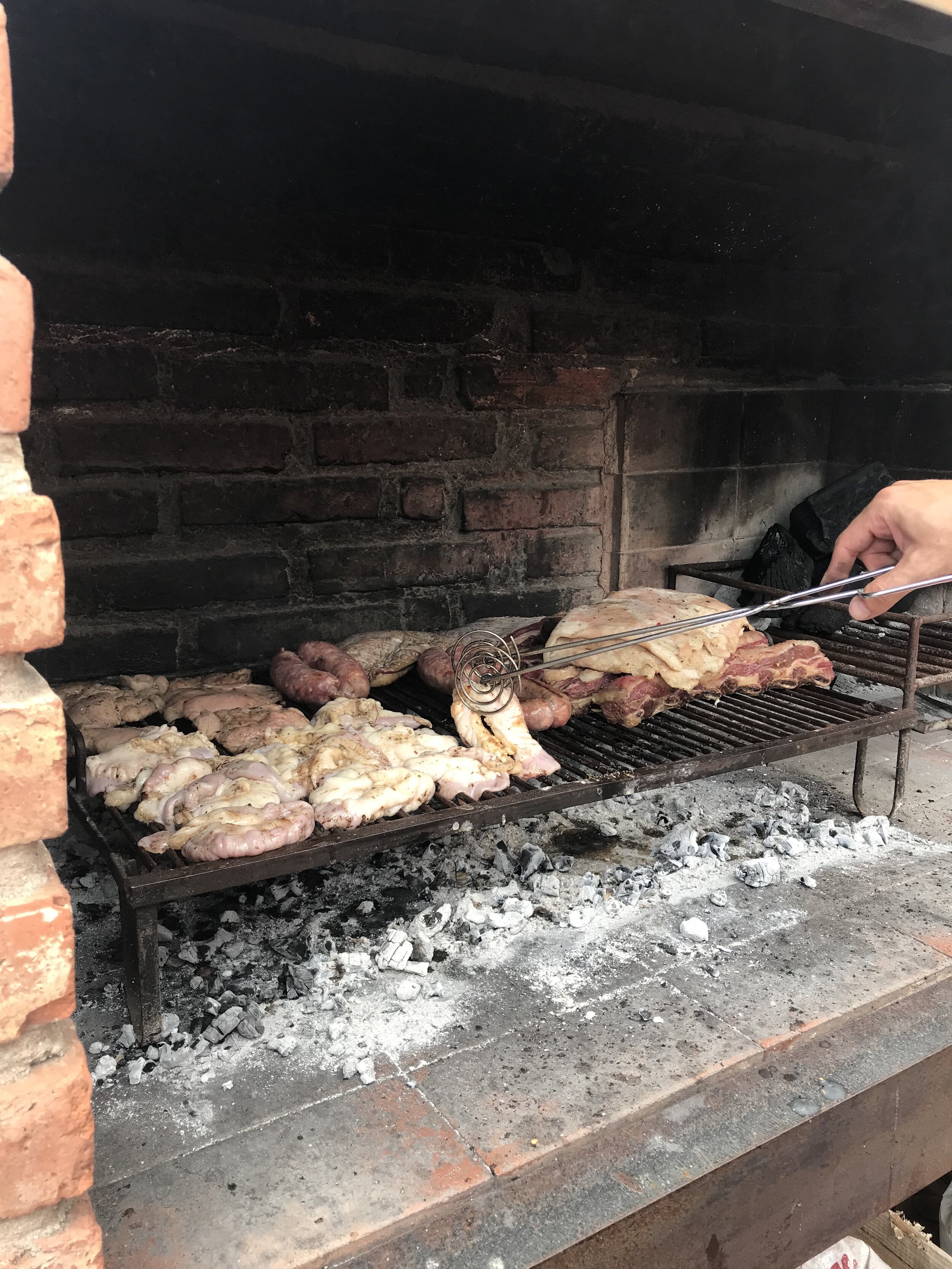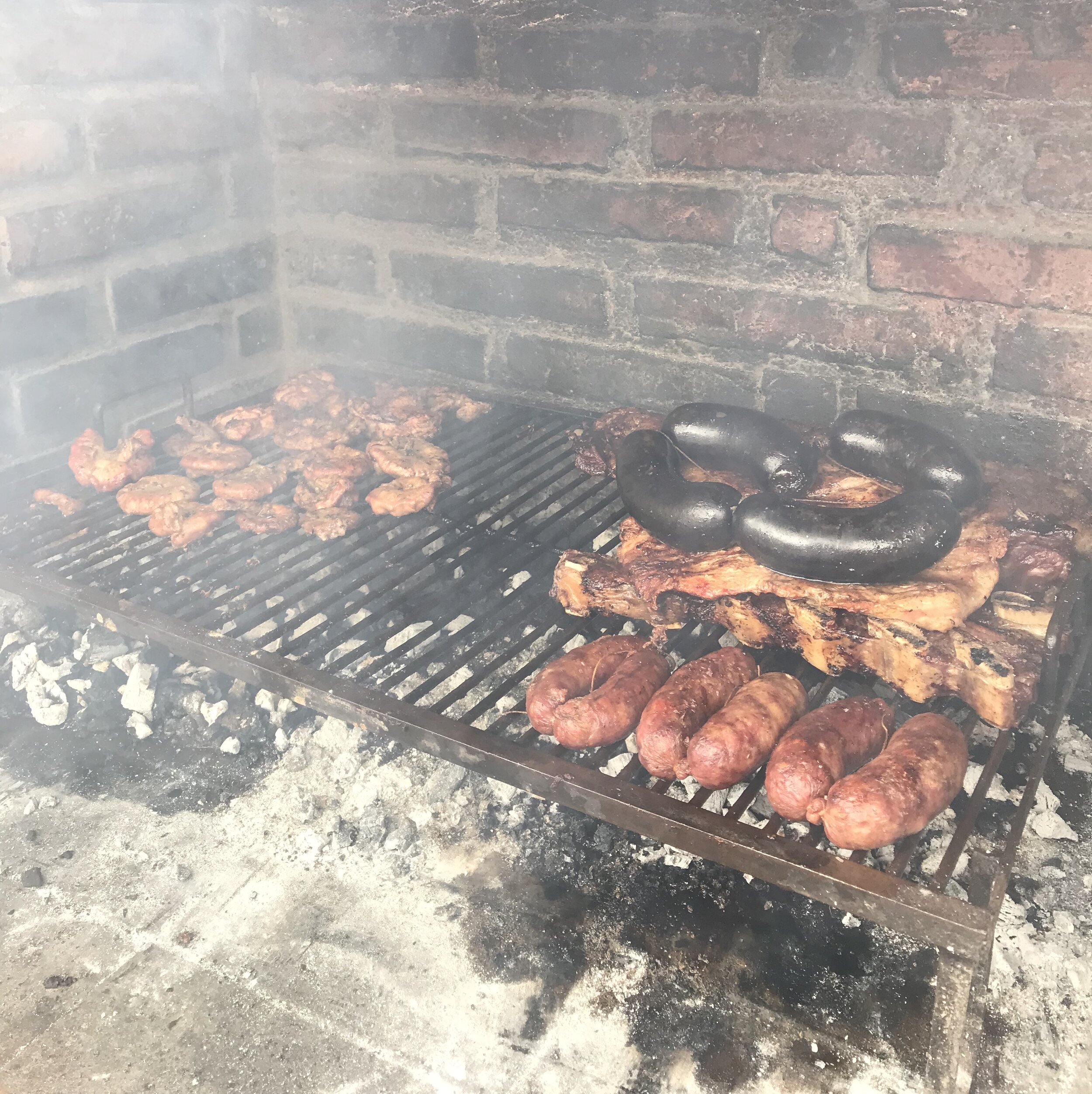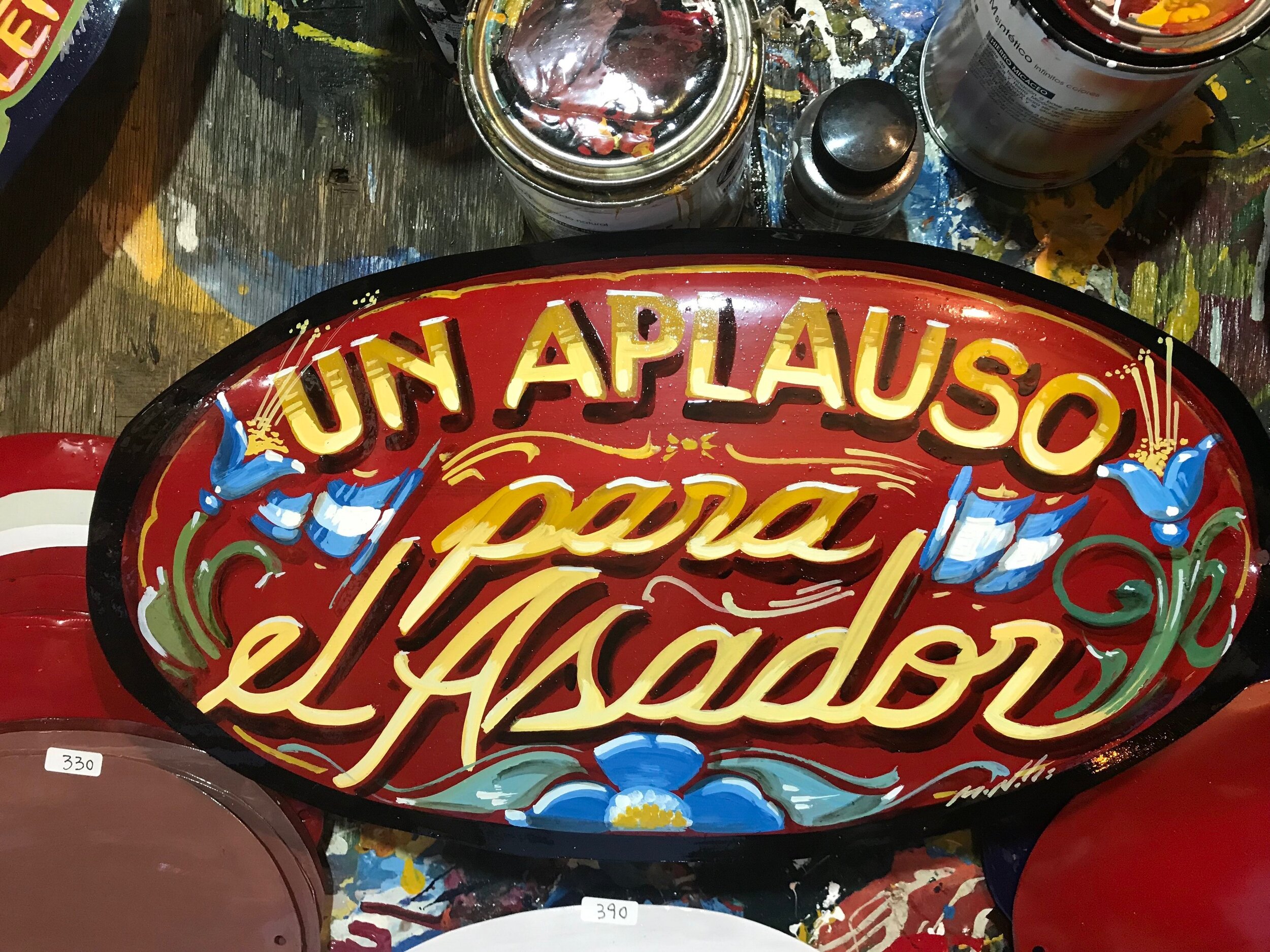The Joy of a Simple Asado
Asado is a foundation of Argentinian culture. And for something that underpins the way of life for a whole country, it is surprisingly simple.
The word ‘asado’ comes from the verb asar, meaning ‘to roast’. In plain terms, it’s a gathering of your family and friends (and with asado, it really is the more the merrier!) around a table of delicious foods for everyone to enjoy.
Asado started in the mid-nineteenth century, when herds of wild cattle happily grazed on the nutrient-rich, high-quality grasses covering the vast, fertile plains of Las Pampas. Consuming such a wholesome diet resulted in the supreme quality of meat that Argentina is now renowned for.
Inhabitants of the region- especially gauchos- began to skewer cuts of beef on a metal frame, leaving the meat to cook for a few hours by a slow-burning fire. The favourite choice of cut was usually ribs, for their incredible versatility and mouthwatering flavour. Some gauchos preferred to use wood from the Quebracho tree to cook their meat with, as it provided a rich, smokey taste- however, due to the beef’s tenderness and already full flavour, this was a less common practice. Washed down with the earthy tang of maté tea, asado formed the basis of a gaucho’s diet.
Today, most Argentinians aren’t skilled horsemen galloping around Las Pampas- but it doesn’t stop us from continuing the tradition!
Symbolising friendship, hospitality and warmth (the fundaments of Argentine society), the person who undertakes the arduous task of cooking several cuts of meat is awarded the title of asador or parillero.
At a modern asado, the charcoal is first ignited and cuts of meat, be it beef, lamb or chicken, are carefully placed onto the grill and sometimes (depending on its size) a metal skewer. Meat isn’t marinated prior to its cooking, instead typically being seasoned with a pinch of salt. Glasses are typically filled with a fruity Argentinian malbec, or soft drinks for those who don’t drink alcohol.
Next up are the entradas. Given how delicious they are, restraining yourself from eating too much before the main meal can be difficult. Plates of tasty picada (cold cuts of meats and cheeses), smooth mollejas (cuts of pancreas and thymus, typically from a calf or lamb) and creamy grilled provoleta cheese are laid out on the table.
Obviously, we couldn’t not mention the best entrada of all: empanadas. Enveloped in a crisp, buttery layer of pastry, empanadas are traditional Argentinian pasties usually filled with varying flavours of meats.
Cuts that take longer on the grill, like costillas (ribs) and vacío (skirt steak) are next up on the menu, served with sauces like chimichurri (parsley and oil), salsa criolla (tomato, onion and vinegar), bread, salad and occasionally verduras asadas (grilled vegetables, like carrots or courgettes).
Costillas and vacío perfectly embody the phrase ‘save the best til last’. Juicy, tender and with each bite bursting with flavour, eating these cuts of meat could be described as a biblical experience, especially if they’ve been prepared with a recipe passed through the generations.
After the meat has been eaten, it’s time for el aplauso para el asador, where everyone at the table claps to show their appreciation for the asador.
However, the meal isn’t over yet! The last dish is a light dessert- typically fresh fruits or a sweet flan with dulce de leche.
All in all, asados usually take place over two or three hours and can be where the best conversations take place and new friendships are formed. After all, who doesn’t love good food and a chance to catch up with friends and family?








